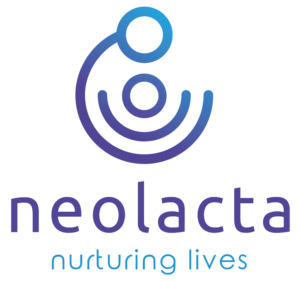“Overactive Letdown” holds the potential to profoundly affect both mothers and infants. Also known as hyperlactation or forceful letdown, this phenomenon refers to an exceptionally strong milk flow during breastfeeding. While a robust milk supply is undeniably advantageous, managing fast milkflow
during breastfeedig can present challenges for both mothers and their little ones.
For mothers having an overactive letdown, the intensity of the milk flow becomes a double-edged sword. On one hand, it ensures a plentiful supply for the infant, but on the other, it can lead to a series of complications that require careful consideration.
Signs and Symptoms of Hyperactive Letdown: Unraveling the Challenges
Recognizing a hyperactive letdown is essential for both mothers and infants, as it can significantly impact the breastfeeding experience. Understanding the signs and symptoms allows for proactive strategies to address potential challenges and create a more comfortable feeding environment.
- Swift Flow of Milk:
One of the primary indicators of overactive letdown is a rapid and forceful flow of milk. Mothers may notice milk spraying from the breast, sometimes even without active sucking from the infant. While this showcases a robust milk supply, it can pose difficulties for the baby in managing the flow. - Frequent Pulling Away:Infants dealing with hyperactive letdown may frequently pull away from the breast during feeds. This behavior is an instinctive response to the forceful milk ejection, as the baby attempts to regulate the flow or catch their breath. Observing your baby’s cues during feeding sessions can provide valuable insights into their experience.
- Coughing and Choking:
Hyperlactation often leads to instances of coughing and choking during breastfeeding. The rapid influx of milk can catch infants off guard, resulting in temporary respiratory challenges. While occasional coughing is normal, persistent episodes may indicate the need for intervention. - Fussiness and Irritability:
Infants may display signs of fussiness and irritability during or after feeds. The overwhelming force of milk flow can leave babies feeling frustrated or overwhelmed. Understanding these cues is crucial for mothers to respond promptly and make adjustments to create a more relaxed feeding environment. - Gassiness and Digestive Discomfort:
Hyperactive letdown can contribute to increased gassiness and digestive discomfort in infants. The forceful flow may lead to the ingestion of air during feeds, causing tummy troubles. Mothers should be attentive to signs of discomfort, such as increased gas or colicky behavior, and explore ways to mitigate these
challenges.
Understanding Hyperactive Letdown: Unraveling the
Causes and Impact
Exploring the Causes:
Hyperlactation, or overactive letdown, can be attributed to various factors, with oversupply of milk being a prominent contributor. The abundance of milk can result from the body’s overenthusiastic response to the demand for breastfeeding, leading to a surplus of milk production. This oversupply often translates into a forceful milk ejection during feeds, creating challenges for both mothers and their infants.
The Role of Forceful Letdown:
Forceful letdown is a natural response to the physiological stimulation of breastfeeding. However, in the case of hyperactive letdown, this process becomes more pronounced, with the milk forcefully spraying from the breast. The force can overwhelm the baby, making it difficult for them to maintain a comfortable latch and regulate the flow effectively.
Impact on Breastfeeding Experience
- Nipple Pain and Discomfort:
One of the primary concerns for breastfeeding mothers dealing with hyperactive letdown is nipple pain. The forceful flow of milk can cause discomfort as the baby latches onto the breast. Nipples may become sore, cracked, or even bruised, impacting the overall breastfeeding experience. - Frustration and Refusal to Feed:
Infants, in response to the overwhelming force of milk, may display signs of frustration and may even refuse to feed altogether. This can lead to concerns about adequate milk intake, nutritional needs, and the emotional well-being of both mother and baby. - Potential for Breast Engorgement: Hyperactive letdown may exacerbate issues related to breast engorgement. The rapid flow of milk can contribute to inefficient milk removal during feeds, leading to a backlog of milk in the breasts. This, in turn, increases the risk of engorgement, adding another layer of challenge to the breastfeeding journey.
Addressing Concerns
For Nipple Pain:
Proper Latch Techniques:
Ensuring a proper latch is crucial. Mothers can experiment with different breastfeeding positions to find one that minimizes discomfort for both themselves and the baby.
Nipple Care
Applying lanolin or a breastfeeding-safe cream after feeds can soothe and protect the nipples. Additionally, air-drying the nipples can aid in the healing process.
For Frustration and Refusal to Feed
Burping Breaks:
Incorporating short breaks for burping during feeds can provide the baby with a pause to manage the flow, reducing frustration.
Paced Bottle Feeding:
If supplementing with expressed milk, using paced bottle feeding techniques can help mimic the breastfeeding experience, allowing the baby to control the pace of milk intake.
For Breast Engorgement:
Regular Breastfeeding or Pumping: Ensuring frequent and effective breastfeeding or pumping sessions can help prevent and alleviate breast engorgement. Expressing milk beforefeeds may also soften the breast and facilitate a more comfortable latch.
Strategies for Managing Hyperactive Letdown: Nurturing a Comfortable Breastfeeding Journey
Reclined Feeding Position:
Opt for a semi-reclined or laid-back position during breastfeeding. This allows gravity to work in your favor, minimizing the force of the milk flow. Experiment with different angles until you find the most comfortable and effective position for you and your baby.
Side-Lying Position:
Side-lying breastfeeding is another favorable option. It promotes a relaxed atmosphere, and the baby can control the flow more easily. Ensure that both you and your baby are comfortable and well-supported to maximize the benefits of this position.
Utilize Breast Compression Techniques
Implementing breast compression during feeds can help slow down the flow of milk. As your baby latches and begins to suck, gently compress the breast with your hand, allowing the baby to suck, swallow, and breathe more comfortably. Release the compression when your baby pauses to take a breath.
Switch Nursing:
Switching between breasts during a feeding session, before the baby is fully satisfied, can help manage the force of the letdown. This allows your baby to control the flow, and it may also prevent excessive milk production in one breast.
Introduce Block Feeding:
Block feeding involves breastfeeding on one breast for a set period before switching to the other side. This strategy can help regulate milk supply and reduce the force of the letdown. Try feeding on one breast for a block of 2 to 4 hours before switching to the other side.
Pump Before Feeds:
If your breasts feel particularly full, expressing a small amount of milk before feeds can soften the breast and make latching more manageable for your baby. This can be especially helpful if you are practicing block feeding.
General Tips
Responsive Feeding:
Pay close attention to your baby’s cues during feeds. Allow them to nurse at their own pace, taking breaks as needed. Responsive feeding allows the baby to have more control over the flow, reducing the likelihood of coughing or pulling away.
Burping Breaks:
Introduce short breaks for burping during feeds. This not only provides a pause in the feeding session but also allows the baby to manage the flow more effectively. Burping breaks can be particularly beneficial for infants dealing with a forceful letdown.
Seek Support:
Navigating Hyperactive Letdown with Guidance and Care Consult with Lactation Professionals:
Seeking support from lactation consultants is paramount when dealing with hyperactive letdown. These specialists can provide personalized guidance, observe breastfeeding sessions, and offer tailored strategies to address specific challenges.
Join Breastfeeding Support Groups
Connecting with other mothers who have experienced or are currently navigating hyperactive letdown can be incredibly beneficial. Breastfeeding support groups create a platform for sharing experiences, insights, and tips for managing this aspect of breastfeeding.
Open Communication with Healthcare Providers:
Maintaining open communication with healthcare providers is crucial. Discussing concerns, challenges, and any difficulties faced during breastfeeding allows healthcare professionals to provide targeted advice and support.
Pumping and Storing Milk
Pumping Techniques:
For mothers dealing with hyperactive letdown, incorporating pumping into the routine can help manage milk supply and alleviate breast fullness. Using a breast pump before feeds or between breastfeeding sessions can soften the breast and make latching more comfortable for the baby.
Storing Expressed Milk:
When pumping, it’s important to follow proper guidelines for storing expressed milk. Label and date milk containers, refrigerate or freeze promptly, and use them within recommended time frames to ensure optimal quality and safety.
Paced Bottle Feeding:
If supplementing with expressed milk, adopt paced bottle feeding techniques. Hold the bottle horizontally, allowing the baby to suck, swallow, and breathe at their own pace. This method mimics the natural breastfeeding experience and reduces the force of milk delivery. Remember, each breastfeeding journey is unique, and seeking professional advice when needed is a strength, not a weakness. Your dedication to providing the best for your baby is commendable, and with the right support, you can navigate the challenges of hyperactive letdown with confidence and care. Whether through the expertise of lactation consultants or the camaraderie of support groups, embracing the journey with an open heart and a willingness to seek assistance ensures a positive and fulfilling breastfeeding experience for both you and
your little one.
References
- Eglash A. Treatment of maternal hypergalactia. Breastfeed Med. 2014;9(9):423-425. doi:10.1089/bfm.2014.0133
- van Veldhuizen-Staas, C.G. Overabundant milk supply: an alternative way to intervene by full drainage and block feeding. Int Breastfeed J 2, 11 (2007). https://doi.org/10.1186/1746-4358-2-11
- Ventura AK, Drewelow VM. Knowledge and Use of Paced Bottle-Feeding Among Mothers of Young Infants. J Nutr Educ Behav. 2023;55(11):796- doi:10.1016/j.jneb.2023.08.002
- Lim AR, Song JA, Hur MH, Lee MK, Lee MS. Cabbage compression early breast care on breast engorgement in primiparous women after cesarean birth: a controlled clinical trial. Int J Clin Exp Med. 2015;8(11):21335-21342. Published 2015 Nov 15.




